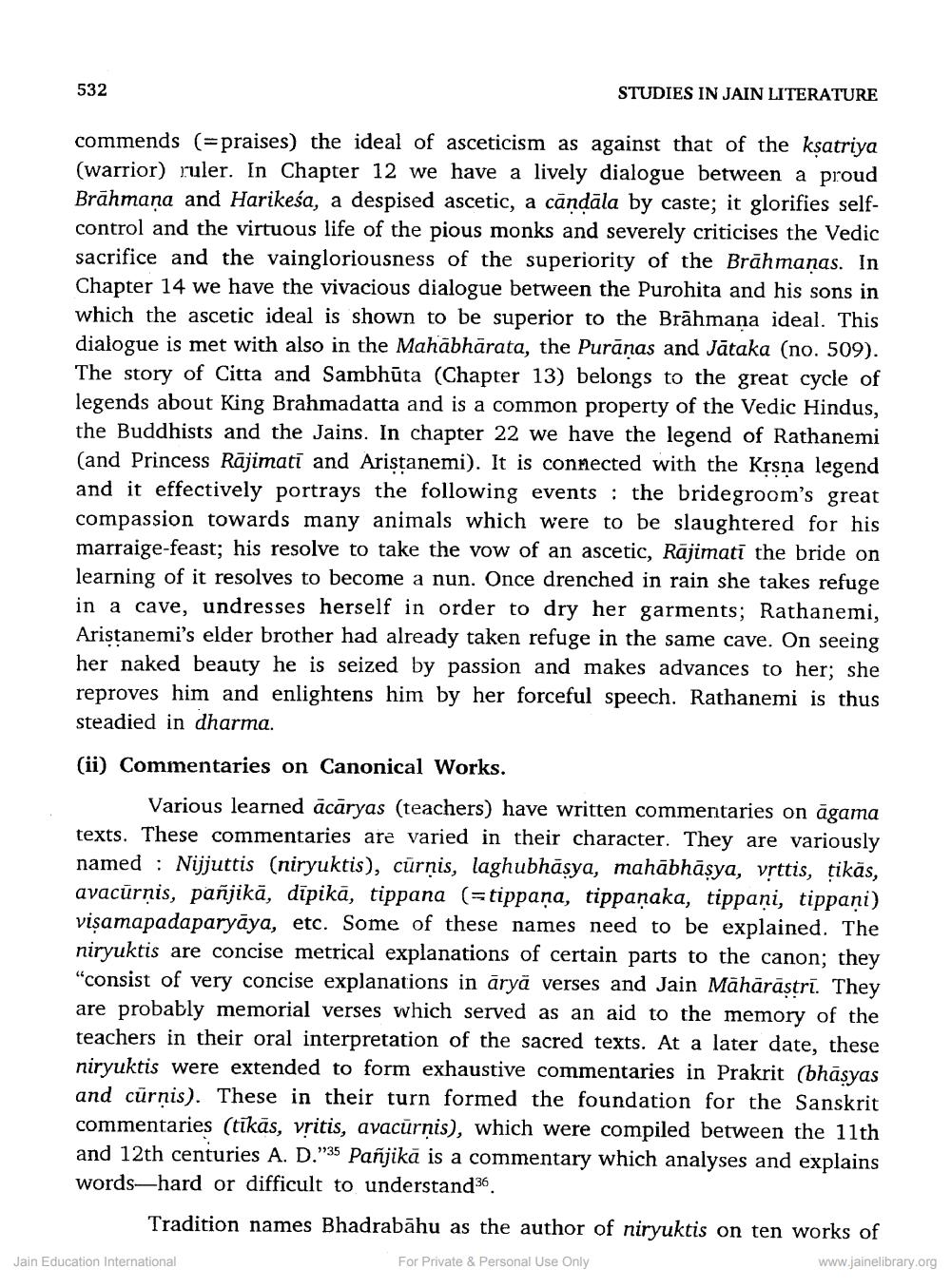________________ 532 STUDIES IN JAIN LITERATURE commends (=praises) the ideal of asceticism as against that of the ksatriya (warrior) ruler. In Chapter 12 we have a lively dialogue between a proud Brahmana and Harikesa, a despised ascetic, a candala by caste; it glorifies selfcontrol and the virtuous life of the pious monks and severely criticises the Vedic sacrifice and the vaingloriousness of the superiority of the Brahmanas. In Chapter 14 we have the vivacious dialogue between the Purohita and his sons in which the ascetic ideal is shown to be superior to the Brahmana ideal. This dialogue is met with also in the Mahabharata, the Puranas and Jataka (no. 509). The story of Citta and Sambhuta (Chapter 13) belongs to the great cycle of legends about King Brahmadatta and is a common property of the Vedic Hindus, the Buddhists and the Jains. In chapter 22 we have the legend of Rathanemi (and Princess Rajimati and Aristanemi). It is connected with the Krsna legend and it effectively portrays the following events : the bridegroom's great compassion towards many animals which were to be slaughtered for his marraige-feast; his resolve to take the vow of an ascetic, Rajimati the bride on learning of it resolves to become a nun. Once drenched in rain she takes refuge in a cave, undresses herself in order to dry her garments; Rathanemi, Aristanemi's elder brother had already taken refuge in the same cave. On seeing her naked beauty he is seized by passion and makes advances to her; she reproves him and enlightens him by her forceful speech. Rathanemi is thus steadied in dharma. (ii) Commentaries on Canonical Works. Various learned acaryas (teachers) have written commentaries on agama texts. These commentaries are varied in their character. They are variously named : Nijjuttis (niryuktis), curnis, laghubhasya, mahabhasya, vrttis, tikas, avacurnis, panjika, dipika, tippana (= tippana, tippanaka, tippani, tippani) visamapadaparyaya, etc. Some of these names need to be explained. The niryuktis are concise metrical explanations of certain parts to the canon; they "consist of very concise explanations in arya verses and Jain Maharastri. They are probably memorial verses which served as an aid to the memory of the teachers in their oral interpretation of the sacred texts. At a later date, these niryuktis were extended to form exhaustive commentaries in Prakrit (bhasyas and curnis). These in their turn formed the foundation for the Sanskrit commentaries (tikas, vritis, avacurnis), which were compiled between the 11th and 12th centuries A. D."35 Panjika is a commentary which analyses and explains words--hard or difficult to understand36. Tradition names Bhadrabahu as the author of niryuktis on ten works of Jain Education International For Private & Personal Use Only www.jainelibrary.org




